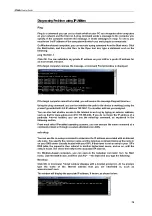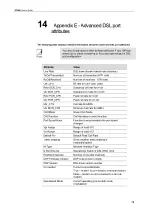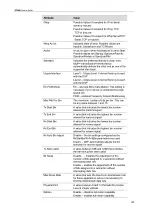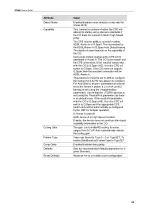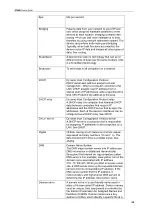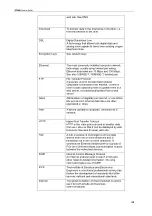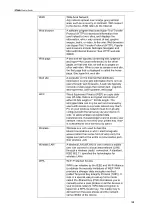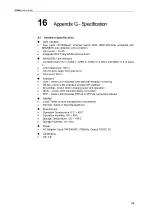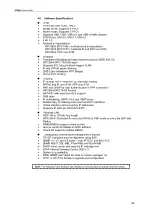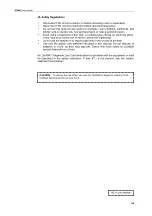
X7968r
User’s Guide
RIP
Routing Information Protocol
The original TCP/IP routing protocol. There are
two versions of RIP: version I and version II.
RJ-11
Registered Jack Standard-11
The standard plug used to connect telephones, fax
machines, modems, etc. to a telephone port. It is a
6-pin connector usually containing four wires.
RJ-45
Registered Jack Standard-45
The 8-pin plug used in transmitting data over
phone lines. Ethernet cabling usually uses this
type of connector.
Routing
Forwarding data between your network and the
Internet on the most efficient route, based on the
data’s destination IP address and current network
conditions. A device that performs routing is called
a router.
SDNS
Secondary Domain Name System (server)
A DNS server that can be used if the primary DSN
server is not available. See DNS.
Subnet
A subnet is a portion of a network. The subnet is
distinguished from the larger network by a subnet
mask that selects some of the computers of the
network and excludes all others. The subnet's
computers remain physically connected to the rest
of the parent network, but they are treated as
though they were on a separate network. See
network mask.
Subnet mask
A mask that defines a subnet. See network mask.
TCP See
TCP/IP.
TCP/IP Transmission
Control
Protocol/Internet Protocol
The basic protocols used on the Internet. TCP is
responsible for dividing data up into packets for
delivery and reassembling them at the destination,
while IP is responsible for delivering the packets
from source to destination. When TCP and IP are
bundled with higher-level applications such as
HTTP, FTP, Telnet, etc., TCP/IP refers to this
whole suite of protocols.
Telnet
An interactive, character-based program used to
access a remote computer. While HTTP (the web
protocol) and FTP only allow you to download files
from a remote computer, Telnet allows you to log
into and use a computer from a remote location.
TFTP
Trivial File Transfer Protocol
A protocol for file transfers, TFTP is easier to use
than File Transfer Protocol (FTP) but not as
capable or secure.
TKIP
Temporal Key Integrity Protocol (TKIP) provides
WPA with a data encryption function. It ensures
that a unique master key is generated for each
packet, supports message integrity and
88



